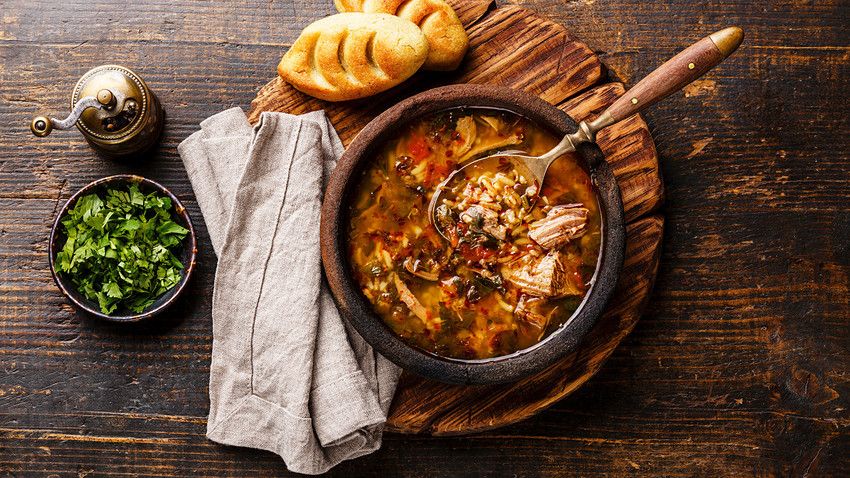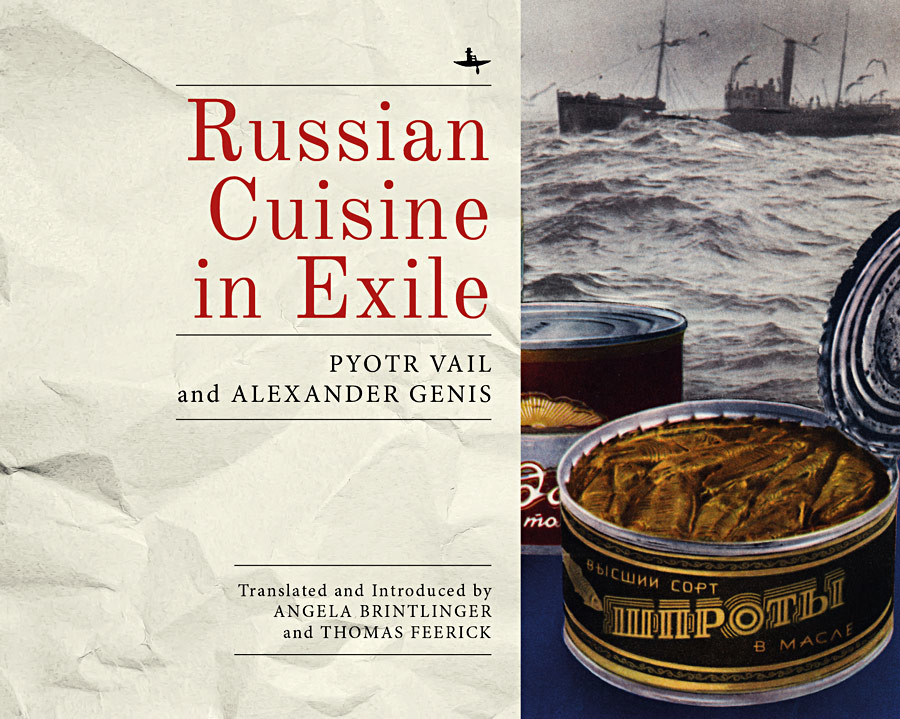Russian emigre writers Genis and Vail on how to cook kharcho – Georgia’s famous soup

"We are not in exile, we are on a mission," Peter Vail and Alexander Genis joke. As first-wave Russian emigre writers in the U.S., they have published culinary columns in Los Angeles weekly newspaper Panorama and compiled them in the Russian Cuisine in Exile book. This is not an ordinary culinary book, but a collection of witty articles, full of anecdotes and stories from the Soviet past. Another Russian emigre writer Sergei Dovlatov even once said the book could serve as a portrait of the whole generation. Here is a chapter from the book kindly submitted by Academic Studies Press.
I'll have the kharcho !
Our people have embraced internationalism on one sphere only: cuisine. We treat our foreign friends to pelmeni. Russian restaurants lure customers to Brighton Beach with pilaf. American cookbooks include the walnut sauce satsivi under "Russian Foods." The Soviet pavilion at the World's Fair served borscht and shashlik. This is clearly a

Peter Vail (L) and Alexander Genis
Academic Studies PressIt is a deep, even criminal, delusion to consider Caucasian food to be merely spicy. While the preparation does usually include red pepper and often garlic, it would take a
Georgian cuisine is not just spicy, it's flavorful! And in its spice bouquet, pepper and garlic occupy one of the lowest places, surpassed by cilantro, parsley, tarragon, basil, cinnamon, clove, saffron,
Try to make
How to cook it:

'Russian Cuisine in Exile' book cover
Academic Studies PressFor the first set finely chop 4 medium-sized onions and fry them with 1 tablespoon of flour, one parsley root, a bay leaf, and a dozen crushed peppercorns. After 5 minutes, pour in half a cup of freshly-crushed walnuts.
The second set of spices is added after 5 more minutes and consists 2 tablespoons of [chopped] parsley greens, 1 teaspoon of dried basil, and 1/2 teaspoon each of red pepper and cinnamon. Only then add the acid. Georgians use
In 5 minutes, turn off the flame. Add 5 cloves of crushed garlic, 2 tablespoons of cilantro greens, and 1/2 tablespoon of basil or celery leaves, and let it stand for about 5 minutes.
READ MORE: Alexander Genis: English is
If using any of Russia Beyond's content, partly or in full, always provide an active hyperlink to the original material.
Subscribe
to our newsletter!
Get the week's best stories straight to your inbox